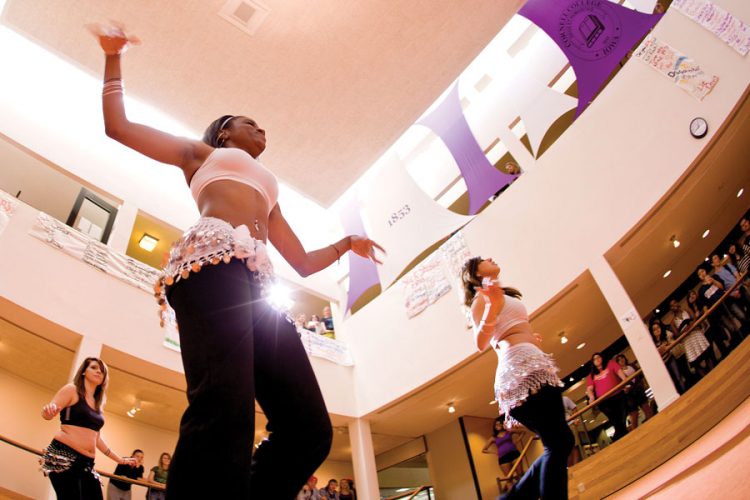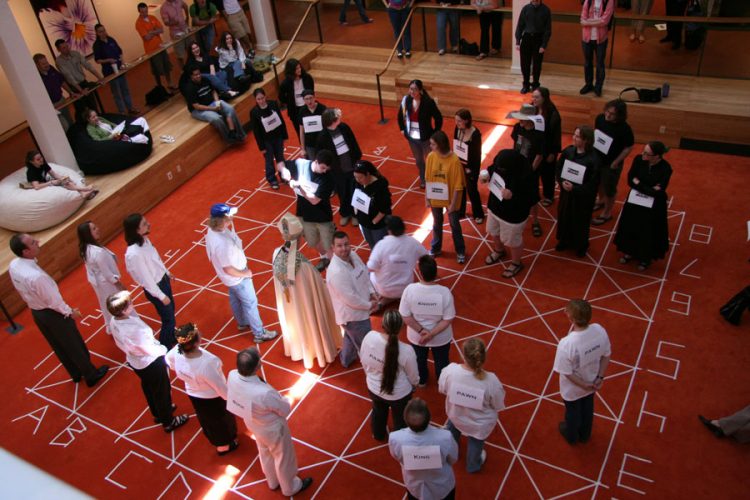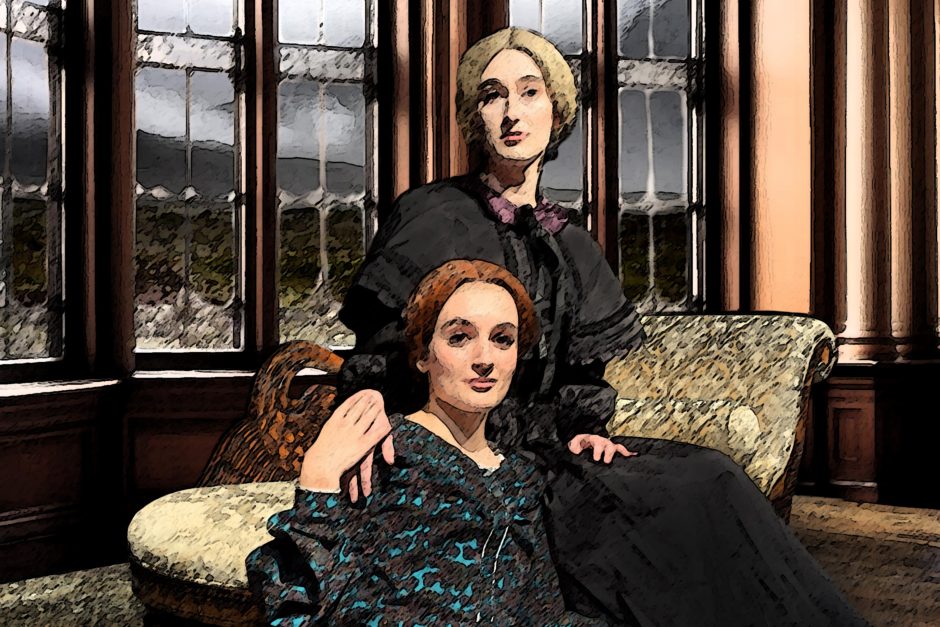Meet me at the Orange Carpet
Lunchtime at Cornell. As the block plan ensured that most classes dismissed at 11 a.m., the Commons was swarmed by hungry students within 15 minutes. While waiting for the dining room doors to open, students gathered upon one of Cornell’s most outstanding physical features: the Orange Carpet. The OC was more than simply a 930-square-foot swatch of sunset-colored fibers; it was the space, bright and open, where students gathered from morning until midnight to study, talk, listen, dance, nap, and play.

As a prospective Cornell student, the most memorable part of my campus tour was when the peppy tour guide threw open the doors of the boisterous Commons and proudly proclaimed that I was about to see the most expansive piece of orange carpet this side of the Mississippi. How could I go wrong attending a college with the largest pipe organ and the largest stretch of orange carpet west of the mighty Mississippi? Students were lounging comfortably or engaged in conversations on the OC, worn thin and spotted after years of spilled sodas and foot traffic.

The Orange Carpet has been a Cornell landmark since the day the Commons opened in 1966. Then-president Arland Christ-Janer chose the color himself. As he once explained, “What we were looking for was an accent that would draw you in. That room, as you came in, needed something that said POW! and orange seemed to do it.” Students’ passions for the Popsicle-colored carpet overflowed when word came that some members of the Class of 1999 wanted, as their senior gift, to replace the orange carpet with a Cornell-purple carpet.
Our voices were heard. Orange it is still.
When the Orange Carpet was replaced, thicker and softer but just as vibrantly gaudy, it held footprints like shadows.
Footprints of students stopping to chat, to read in the openness, to procrastinate (friends are bound to see you from the upper bowl of the Commons and stop to say hello or share the latest piece of small-college gossip), to study, to practice for theatrical performances, to meet before a party or night at the bars.

Footprints of presidential candidates and worldwide media organizations. The OC garnered the world’s attention when Bill Bradley stepped into the Commons the day before the Iowa caucuses. The crowd of students, faculty, and visitors craned to see a potential world leader who also happened to be a basketball star. A buzz of excitement rippled through the OC. International publicity. If I did not distinguish myself in any other way during my college career, I can say that the back of my head was on Japanese television.
Footprints of rap artists. We bobbed and throbbed with Sir Mix-a-Lot on the Orange Carpet. The orange was barely visible under the press of sweaty students crowding for a spot near the rap star.
Footprints of folk singers. When Dan Schwartz brought his poignant lyrics and stellar guitar riffs to the Orange Carpet, we sat cross-legged in small groups, soaking in the mellow music.
Footprints of jugglers with a passionate dedication to human rights. Every Monday, the Jugglers Against Homophobia united on the Orange Carpet to share the art of keeping three balls in the air with two hands, and to practice complicated juggling moves involving clubs, swords, and rubber chickens.
Footprints of poets. A creative writing group met weekly to, as one member wrote, “hang similes and metaphors out to dry over Orange Carpet.”
Footprints of activists. When Cornell hosted a conference on white privilege in 1999, worlds of opportunity and oppression were illuminated, challenging students and the college to realize and actively combat racism.
Footprints of fatigued students, chainsaw jugglers, salsa dancers, and comedians marked the Orange Carpet during my time at Cornell, and undoubtedly, generations of future Cornellians will gather to cram for tests, munch Ratt cheese balls, and make memories on that expanse of unmistakable orange.
Christy Hamilton ’01 wrote this article, originally published in the Cornell Report in 2000, as a student.
This story is part of a series on six student gathering spots, Hangouts through the years.



